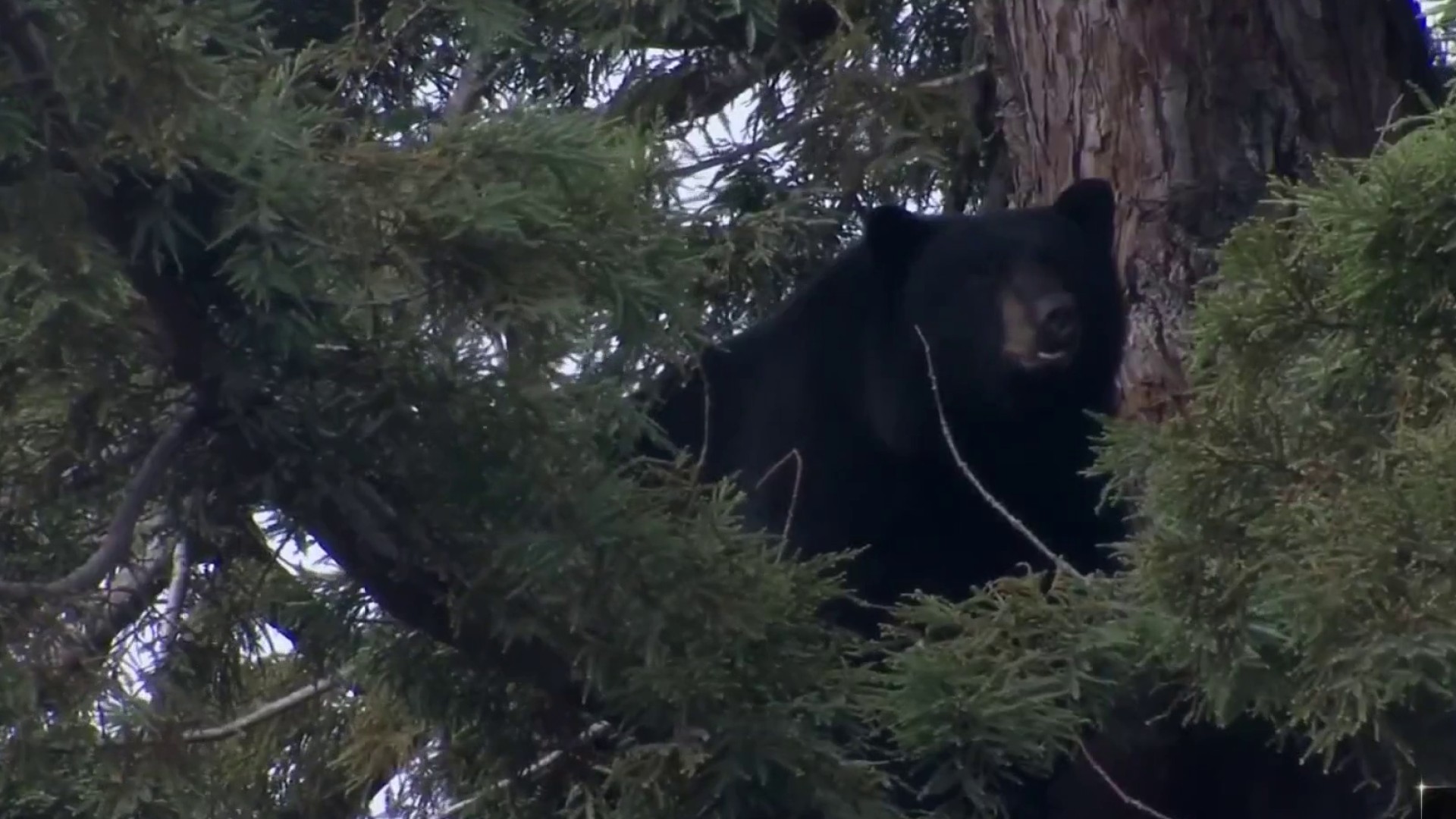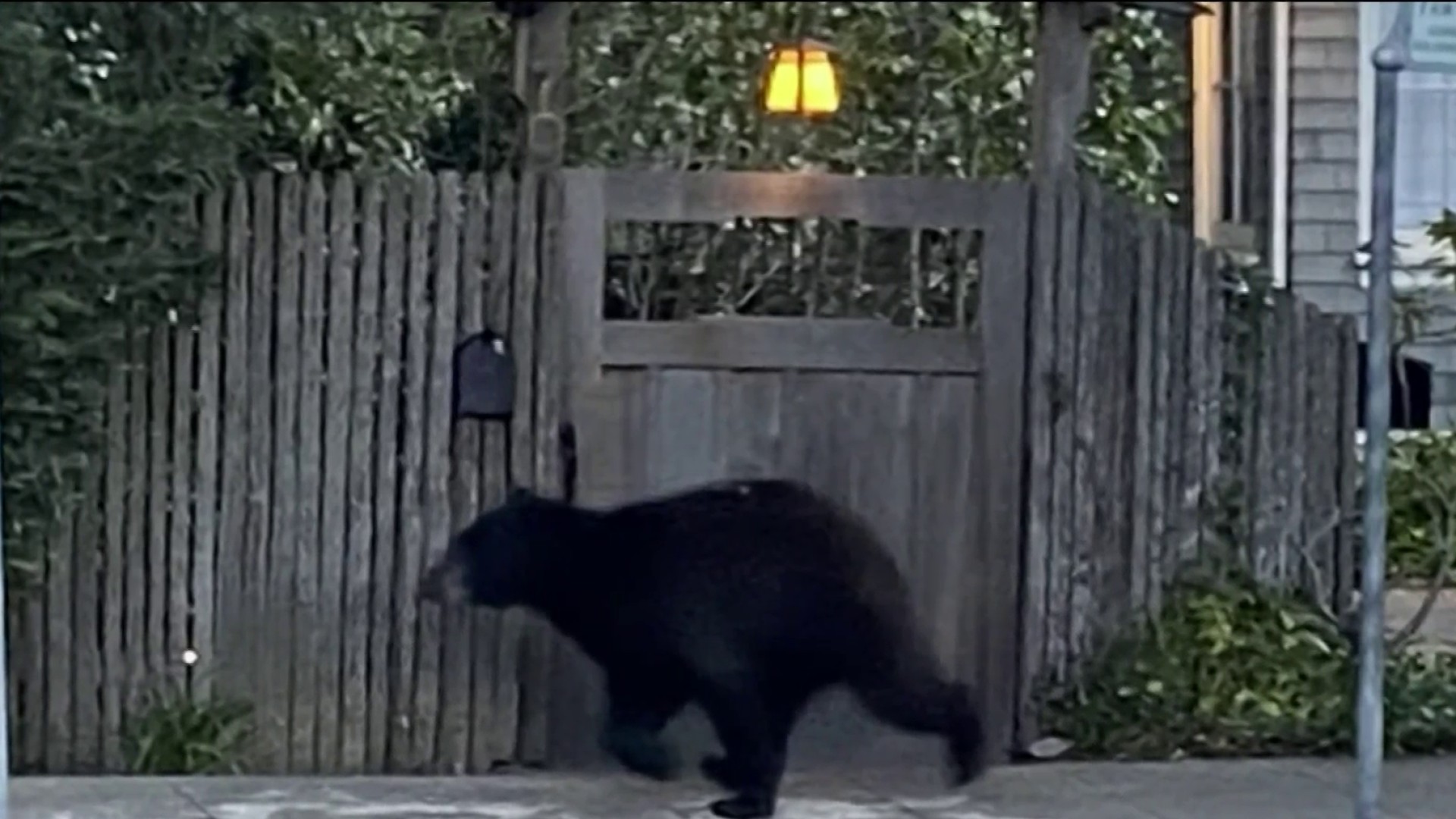In May, a curious, large, furry animal appeared in the Marin County town of San Anselmo, scampered up a tree and treated locals to a rare spectacle. In an area that sees its share of wildlife, residents were stunned to learn the creature was a black bear perched in the tree just a block from downtown.
The bear eventually climbed down on its own and hightailed it back into nature, but its brief foray into the limelight opened the door to a new awareness: black bears appear to be expanding their territory into Napa and Sonoma counties – and maybe even parts of Marin.
"Locally we have always seen bears occasionally, and it was usually just sort of the one-off folks would remember from a news story or something else," said Naftali Moed, an environmental scientist with California State Parks. "But now we are seeing much more consistently bears here in the Mayacamas and sort of pushing into other places."
The Mayacamas Mountains extend from bear-populated Mendocino County into Sonoma and Napa counties where evidence suggests an increasing black bear population. The bears, which avoid people, are rarely spotted by the human eye, but wildlife cameras are supplying evidence indicating their numbers are on the rise.
Just uphill from the verdant vineyards of Sonoma County, a series of 40 wildlife cameras spread across the thick woods of Sugarloaf Ridge State Park have been documenting the growing presence of bears, capturing them eating native plants and even one clip showing a bear scavenging an already dead deer carcass.
"In the past five years we have had hundreds of sightings on the cameras," said John Roney of the Sonoma Ecological Center, which operates the park and campground for the state. "Only four credible sightings by individual and in each case the bear, as soon as it noticed the person, it turned and ran as fast as it could."
The signs pointing toward more bears moving into Sonoma and Napa inspired the creation of the North Bay Bear Collaborative two years ago – a group made up of 16 wildlife agencies, conservationist groups, Native American tribes and landowners to not only document the bear population but educate area residents on how to co-exist with them.
As part of its strategy, the group is collecting DNA from bear scat found in the area to try to identify the population and determine where the bears are coming from. Last year, despite interruptions by wildfires and the pandemic, the group identified 33 individual black bears in Sonoma and Marin counties. But because bears are good at avoiding humans, the numbers may only be a glimpse of the current population.
"At present we don’t have a good idea of what the bear numbers are in our area," said Wendy Hayes, a researcher with Sonoma Ecology Center, which is a member of the bear collaborative. "Without that crucial bit of information it’s kind of hard to manage the population. We won’t know if they’re increasing or decreasing."
329 medal events. 32 sports. Endless drama. Catch all the action at the Paris Olympics. Sign up for our free Olympics Headlines newsletter.
Roney said the park is already taking steps to prepare for a future with bears. The park is now collecting trash from the campgrounds nightly and has set out a version of bear-safe food canisters throughout the area. Posters urge visitors to keep track of their trash and food.
"We don’t want to be become like Tahoe," Roney said. "Once a bear gets habituated to trash, it’s very difficult to break them of it."
The bear issue in Tahoe provides a poignant lesson for the Bay Area to follow, as bears in Tahoe regularly ransack cars, trash cans and even homes looking for food. Roney said the North Bay Bear Alliance is encouraging residents in newly bear-populated areas to secure their trash and drive off any bears with loud noise should they come in contact with them.
"Make it easier to go eat manzanita bears than to eat your garbage," Roney advised.
There are multiple theories on why the bears may be expanding into the North Bay, which was once grizzly bear territory before the population was decimated by hunting. Black bears, which are growing in numbers across the entire state, may be simply expanding their territory. But they may also be victims of wildfires, which have claimed thousands of acres of their habitat.
"There have been fires and other events that impacted habitat in other areas," said Moed. "So, that may be pushing bears into places they haven’t been historically."
One peculiar twist on that theory: during recent wildfires, bears were spotted returning to newly burned out terrain.
"We were finding on partners' wildlife cameras, within hours of the fires stopping, bears coming in to check out, 'Hey, where’s there something good to eat?'" Hayes said.
Rural areas in Sonoma, Napa and western Marin County have had bear sightings for more than a decade. Most encounters involve a fleeting glimpse of a rogue bear meandering out into vineyards and orchards. On occasion, a young bear will venture out to expand its territory and end up lost and close to civilization. That's likely the case with the San Anselmo bear last May and another recent incident in Petaluma several weeks ago in which a black bear took shelter in a tree before fleeing.
But the indications are that bears will be a growing member of the Bay Area's critter population, which for some may cause fear and others awe.
"It’s actually in my mind a really great thing to see bears, which are very much a natural part of the ecosystem, coming back in and occupying again places that they’d been absent from," Moed said.



